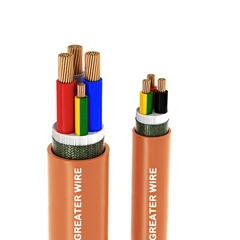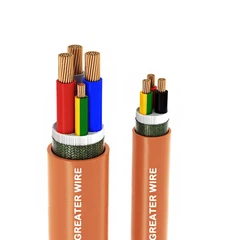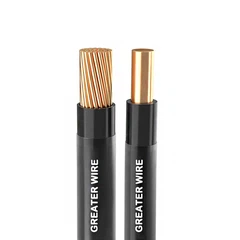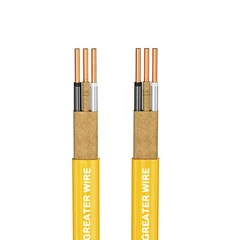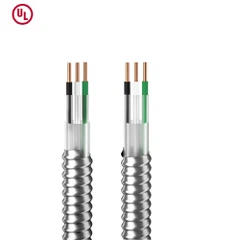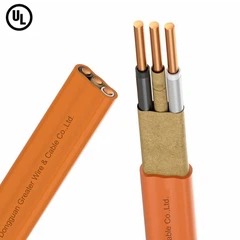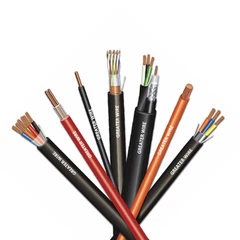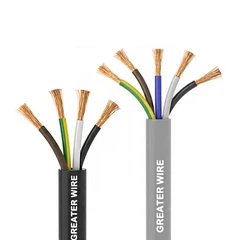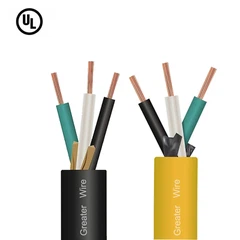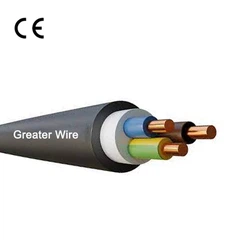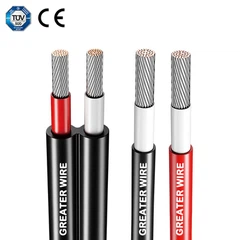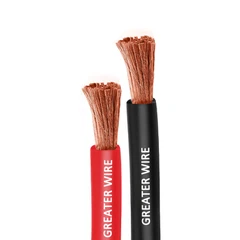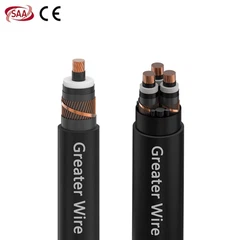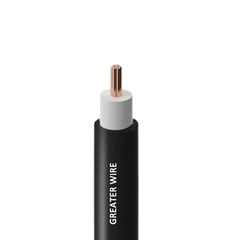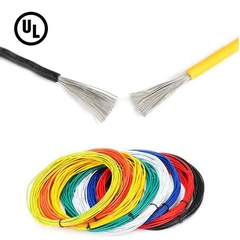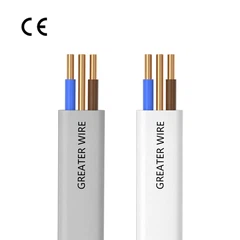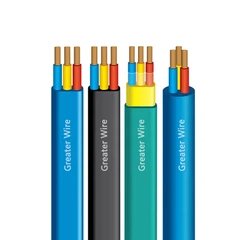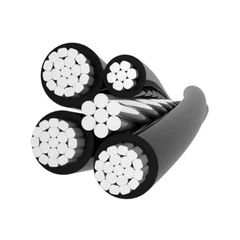1. Basic definition of " THHN THWN-2 wire"
"THHN THWN-2 wire" is a type of wire commonly used in power distribution systems. It meets two standards at the same time: THHN wire and THWN-2 wire. This dual identification means that the wire has two sets of certification characteristics and can meet the requirements of electrical installation in various scenarios.
THHN wire stands for "Thermoplastic High Heat-resistant Nylon-coated", which is a type of wire commonly used in dry environments, with a rated temperature of usually 90°C and a nylon outer sheath for enhanced mechanical protection.
THWN-2 wire stands for "Thermoplastic Heat and Water-resistant Nylon-coated - Version 2", which is the second version of thermoplastic heat-resistant and water-resistant nylon sheathed wire. Its "W" indicates water resistance, and "-2" means that it can operate continuously at 90°C in wet or humid environments.
Therefore, the wire marked as "THHN THWN-2 cable" has the high temperature and mechanical protection required by THHN wire in dry environments, and is also suitable for wet or even buried environments, meeting the use requirements of THWN-2 wire.
2. The meaning of the letters of cable "THHN" and "THWN-2"
In order to understand these abbreviations more clearly, each letter or symbol is first disassembled and explained:
T: Thermoplastic, indicating that the cable insulation material is thermoplastic (such as PVC).
H: Heat-resistant, indicating that it has heat resistance and can usually withstand temperatures of 75°C.
HH: High Heat-resistant, indicating higher heat resistance, which can withstand temperatures up to 90°C.
W: Water-resistant, indicating that the wire is suitable for wet environments or direct burial.
N: Nylon-coated, indicating that the conductor has a nylon sheath on the outer layer to enhance wear resistance and chemical resistance.
"-2": The new version of the standard, which means that the operating temperature of 90°C can be maintained even in wet environments.
When these properties are combined, a wire labeled "THHN THWN-2" becomes an almost universal, all-purpose wire suitable for distribution wiring in residential, commercial, and industrial applications.

3. Structural composition and manufacturing process
"THHN THWN-2" wire are usually composed of the following parts:
Copper or aluminum conductor: Most THHN and THWN-2 wires use stranded copper to increase flexibility. But thhn solid wire conductors can also be used for some residential wiring.
Thermoplastic insulation layer: Usually polyvinyl chloride (PVC), with good dielectric strength and thermal stability.
Nylon sheath: The nylon layer not only provides physical protection, but also resists chemical corrosion such as grease, gasoline, acid and alkali.
Printing mark: The surface of the wire is usually printed with information such as the manufacturer, standard type (such as "THHN THWN-2"), rated voltage, conductor specifications, etc.
During the manufacturing process, the conductor is first annealed to increase flexibility, then coated with an insulating layer, followed by extrusion of a nylon outer layer, and finally online testing and printing of marks.
4. Application scenarios and laying environment
Because it meets both THHN and THWN-2 standards, this type of wire has stronger versatility. Typical applications include:
Commercial building wiring: suitable for distribution boards, lighting systems and socket lines.
Industrial power systems: used for motor control, power connection, internal wiring of machinery and equipment.
Residential wiring: used for power distribution in dry or wet areas, especially in underground pipes or open systems.
Underground systems: can also be buried if protected by metal or non-metallic conduits.
It should be noted that although THWN-2 wire can be used in wet environments, it is not recommended to expose them directly in the soil. They usually need to be inserted into suitable pipes to enhance mechanical protection and extend life.

5. Electrical performance and rated parameters
The electrical performance of THHN and THWN-2 wire is controlled by the specifications of NEC (National Electrical Code) and UL (Underwriters Laboratory). Common parameters include:
Rated voltage: 600 volts (600V).
Temperature resistance:
THHN: 90°C (dry environment).
THWN: 75°C (humid environment).
THWN-2: 90°C (dry and humid environment).
Conductor size range: From wire thhn 18 AWG to wire thhn 1000 kcmil.
Flammability: Most THHN/THWN-2 cable meet UL 83 standards and have good flame retardancy.
6. Why is it marked as "THHN THWN-2 wire" instead of just one?
Manufacturers mark wires as "THHN THWN-2" for the following reasons:
1.Easy to adapt to the market: Some project specifications only accept THHN, while others require THWN-2. Dual marking ensures that one wire can be used for multiple needs at the same time.
2.Improve economic efficiency: Avoid purchasing two different standards of wires for different environments during engineering procurement, which is conducive to unified inventory management.
3.Improve product competitiveness: Manufacturers gain wider market acceptance and application scenarios through dual certification products.
4.Comply with updated specifications: As NEC specifications have higher requirements for heat and water resistance, THWN-2 cable gradually replaces the early THWN cable, so manufacturers often use the "THHN THWN-2" mark to reflect its technical compliance.
7. Comparison with other wire standards
To better understand the meaning of "THHN THWN-2 wire", we can briefly compare several common wire types:
THW wire: thermoplastic insulation, heat resistant to 75°C, suitable for wet environments, no nylon sheath.
THWN wire(non-2): moisture resistant, 75°C, suitable only for wet environments but not as heat resistant as THWN-2.
XHHW/XHHW-2 wire: Cross-linked polyethylene (XLPE) insulation, better resistance to high temperature and moisture, but higher cost.
MTW wire: used for internal wiring of mechanical equipment, with certain oil resistance and flexibility, suitable for industrial control boxes.
Compared with the above, "THHN THWN-2" wire provides a more balanced solution between cost, versatility, flexibility and thermal performance, especially suitable for building wiring projects.

